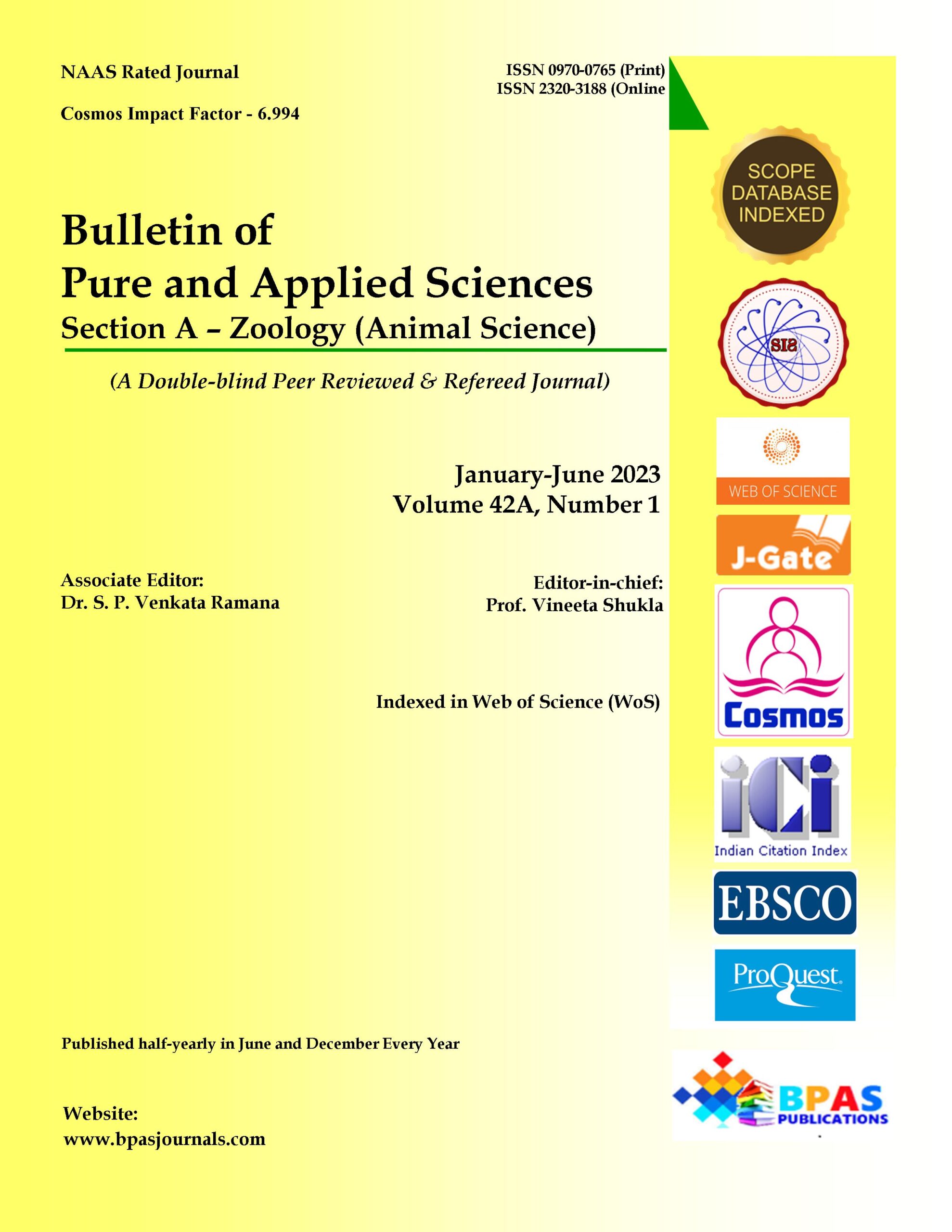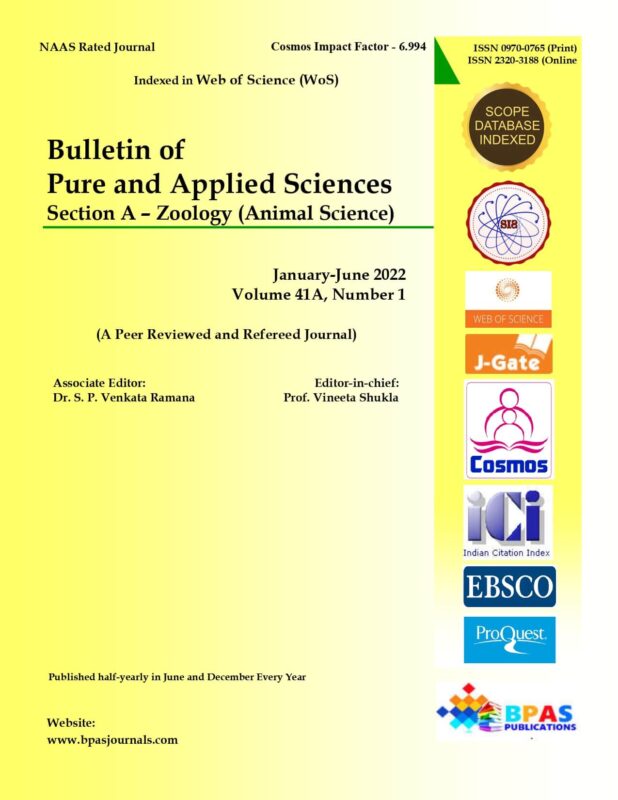Feeding Ecology of Fishes – A Mini Review
9.38$
Feeding Ecology of Fishes – A Mini Review
1Yahya Bakhtiyar*, 2Sinan Nissar, 3Mohammad Yasir Arafat, and 4Raheela Mushtaq
Bulletin of Pure and Applied Sciences
Zoology (Animal Science), Vol.42A, No.1,
January-June 2023: P.190-213
DOI: 10.48165/bpas.2023.42A.1.17
Review Article
Description
Feeding Ecology of Fishes – A Mini Review
1Yahya Bakhtiyar*, 2Sinan Nissar, 3Mohammad Yasir Arafat, and 4Raheela Mushtaq
| Author’s Affiliation:
1,2,3,4Fish Biology and Limnology Research Laboratory, Department of Zoology, University of Kashmir, Srinagar, Jammu and Kashmir 190006, India
|
| *Corresponding author:
Yahya Bakhtiyar, Fish Biology and Limnology Research Laboratory, Department of Zoology, University of Kashmir, Srinagar, Jammu and Kashmir 190006, India E-mail: yahya.bakhtiyar@gmail.com
|
| Article Info:
Received on 22.02.2023 Revised on 23.03.2023 Approved on 19.05.2023 Accepted on 25.04.2023 Published on 16.06.2023 |


